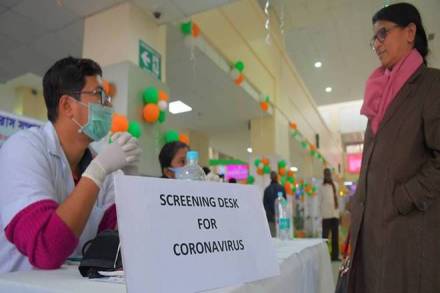With two new cases of coronavirus (SARS CoV-2) confirmed in the country—globally, over 92,000 cases have been confirmed, and over 3,000 deaths reported—one way the government can reassure the public is to talk about its preparedness for preventing a full-scale outbreak. India is already on the World Health Organization’s list of 30 most at-risk countries for the virus, and only thorough public health readiness, in terms of containment and transmission prevention readiness, can be seen as an adequate response. The current state of readiness, while significant, still has room for improvement.
The first step towards containment is screening at-risk groups for symptoms. India seems to be doing well in this regard—Union health minister Harsh Vardhan, at a press event in the national capital on Monday, talked of nearly 5.6 lakh passengers having been screened at 21 airports, and over 12,000 at 12 major and 65 minor seaports. Over 25,000 people have been put under community surveillance under the Integrated Disease Surveillance Programme, under the National Centre for Disease Control.
The centralised reporting and surveillance platform will help mount a rapid response to any suspected outbreak/incidence. Universal screening of passengers from China, Thailand, Iran, South Korea, Japan, Italy, Nepal, Singapore, Vietnam, and Malaysia has also been ordered. India has also imposed a flying ban on China and Iran, two coronavirus hotspots, while travel advisories against non-essential travel to countries like Thailand, Singapore, and Italy have been issued.
There are, however, gaps in the diagnostic infrastructure necessary to contain spread. While in 2012, the creation of 150 diagnostic and research labs with virology-related expertise was proposed, eight years on, only 80 are operable—as Quartz reports, these haven’t been linked with the public health system, and support just ad hoc reporting. While 34 laboratories have been designated as coronavirus testing facilities, 16 more can be added if the situation demands. Reagents to test up to 25,000 cases have been made available while 3,245 samples had been sent for testing as of March 2.
This capacity should seem significant against the US, a developed nation with a larger number of confirmed SARS Co V-2 cases than India, having 40 designated facilities for coronavirus testing. However, given that both the overall population and population density of the US are much smaller than India’s—and that its arrangements are reportedly proving inadequate with rural America having to wait for days for test results—India doesn’t seem to be in a strong position here.
Given the coronavirus test in not an overly difficult one to run, a lot more labs—both in the US and India—could have been roped in after, of course, ensuring they are equipped to prevent contamination and spread. There are two spots of cheer, though. The first is the Serum Institute of India, which has said that it will be ready with a vaccine candidate for human trials in six months, and a coronavirus vaccine by 2022.
The other is Kerala, which has successfully managed the country’s first three confirmed cases of coronavirus infection. The state learnt from its Nipah experience and institutionalised unparalleled coordination for SARS Co V-2. Apart from a 28-day quarantine, against the Centre’s 14-day—cases have been reported where the infection was detected after 27 days—the state has been providing daily updates on quarantining, hospitalisation, and testing, helping stem panic. The Centre could perhaps take a leaf from Kerala’s book.
